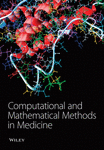Mathematical Modelling of Tumour Invasion and Metastasis
Abstract
In this paper we present two types of mathematical model which describe the invasion of host tissue by tumour cells. In the models, we focus on three key variables implicated in the invasion process, namely, tumour cells, host tissue (extracellular matrix) and matrix-degradative enzymes associated with the tumour cells. The first model focusses on the macro-scale structure (cell population level) and considers the tumour as a single mass. The mathematical model consists of a system of partial differential equations describing the production and/or activation of degradative enzymes by the tumour cells, the degradation of the matrix and the migratory response of the tumour cells. Numerical simulations are presented in one and two space dimensions and compared qualitatively with experimental and clinical observations. The second type of model focusses on the micro-scale (individual cell) level and uses a discrete technique developed in previous models of angiogenesis. This technique enables one to model migration and invasion at the level of individual cells and hence it is possible to examine the implications of metastatic spread. Finally, the results of the models are compared with actual clinical observations and the implications of the model for improved surgical treatment of patients are considered.




